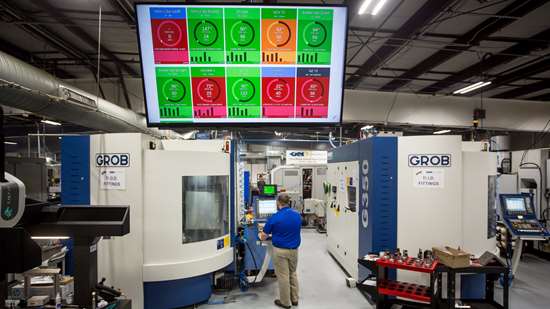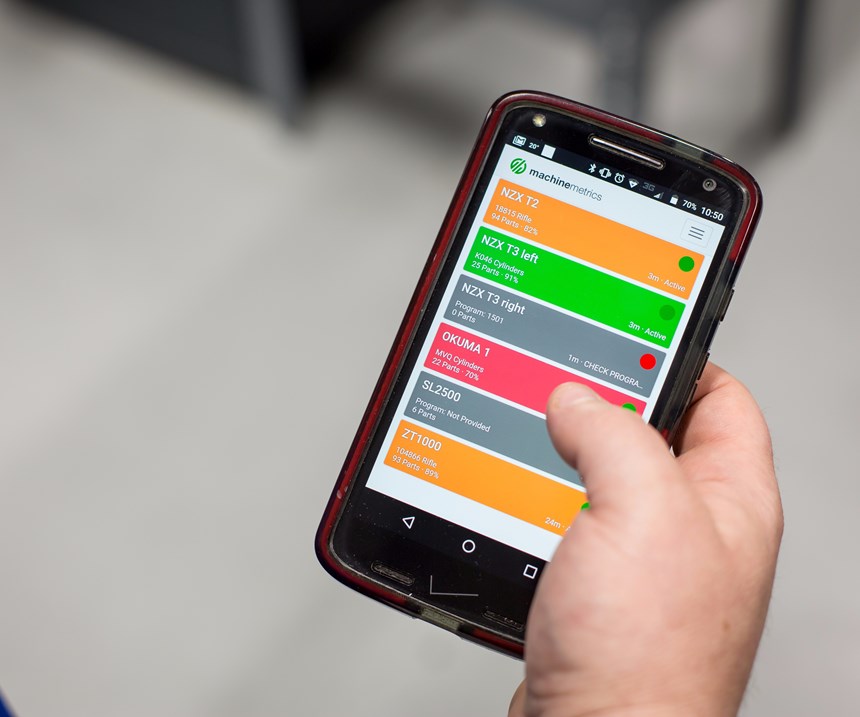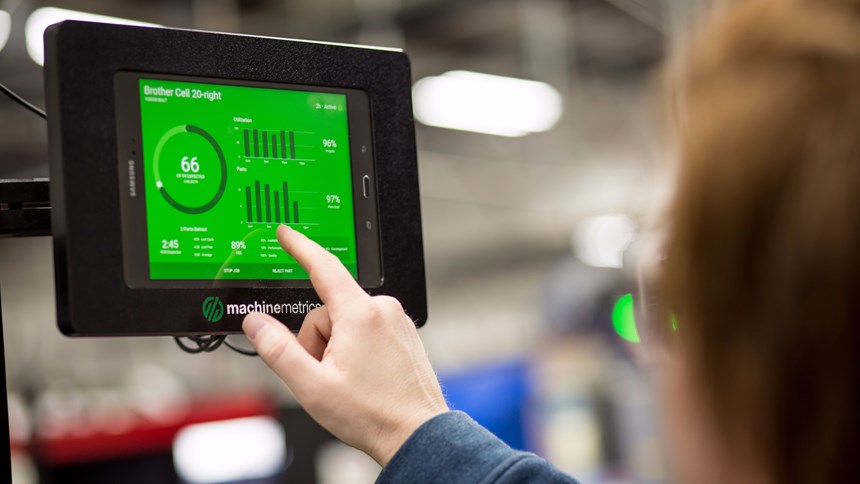Moving Toward a Smart Factory with Manufacturing Analytics
MachineMetrics Inc. has identified a gap in machine monitoring, as manually tracking data can be inefficient to track and can be inaccurate and reactive, but real-time data allows companies to make fast, proactive decisions to bring efficiency to their processes.
#Industry40
Machine monitoring is the first step that companies can take into Industrial Internet of Things (IIoT). To become a data-driven manufacturer, a shop first needs the data. Manually tracking data can create a number of problems: It’s inefficient to track, it can be inaccurate, and it’s reactive. Real-time data, on the other hand, allows companies to make fast, proactive decisions to bring efficiency to their processes.
While a large percentage of shops have plans to or are already using machine monitoring systems, MachineMetrics Inc. claims to have identified a gap in the manufacturing process that goes beyond what most other monitoring companies look to solve. “There was a lack of real-time production visibility and a lack of communication between machine operators and their managers,” says Graham Immerman, MachineMetrics’ director of marketing. “Our system solves this problem by providing visualizations of real-time manufacturing production data, instant notifications and historical analytics, allowing factory workers to make faster, smarter, more confident decisions based on real-time data.”
Featured Content
Automated Data Collection
In its most basic form, MachineMetrics is a software application that provides an at-a-glance overview of all machines operating on a shop floor. Real-time data is collected from machine controls and machine operators for the entire production floor, and companies can use this data to monitor machine conditions (faults, status, tool usage), production (overall equipment effectiveness and machine usage), workorder status, quality tracking and downtime reasons that can be auto classified or indicated by the operator with touchscreen tablet interfaces mounted at the machine tool.
The software displays a color-coded tile system that indicates if a job is functioning at or below expectations by comparing current performance with parts goals to produce real-time OEE (overall equipment effectiveness) metrics. Each tile on the dashboard represents a single machine. Color changes on the tiles indicate the machine’s performance for the current shift, detailing if it’s meeting, exceeding or falling short of expectations. The tiles display different data depending on if the machine is in production, setup or is unscheduled.
During production, information is available for parts per hour, parts produced during a shift or run, percentage of parts’ goal met, machine status, machine name, parts’ goal indicator and job status. Machine-specific actions can also be tracked by clicking on the tile, providing a quick navigation to different key reports.
When a machine is in setup status, information specific to that machine is displayed. The status indicator circle will be yellow and only affects the part goals after any expected setup time has elapsed. The user is prompted to enter any parts he or she wants to keep as good parts. A selected tile displays a “Start Production” button near the top. If a machine is in setup status longer than the predetermined setup time, the user will be prompted to give a reason at the start of production.
Finally, an unscheduled tile displays when a machine does not currently have a job dispatched to it. The tiles appear as grey with a light grey indicator. Although the machine may still be producing parts, it is not scheduled within the system. The tile will still show the number of parts and reports; timeline and diagnostics pages can be navigated by selecting an unscheduled tile.
Why it Matters
MachineMetrics was designed as a solution for the rise of IIoT and Industry 4.0, as the latter promises transparency and a connection between people, machines and processes within the industry. While the implementation of machine monitoring systems continues to increase, MachineMetrics’ Mr. Immerman says many shops have been hesitant for multiple reasons, including fear of clashing with the current ERP system, operators’ concerns with being watched and a general hesitancy to change throughout the industry. He says MachineMetrics set out to ease the implementation and transition process with simplified integration. All that’s required is that machines are networked and accessible from their gateway device for a company to start gathering data within hours.
“The average shop manager spends around two hours a day going around the shop floor collecting data,” Mr. Immerman says. That adds up to 730 hours a year. With MachineMetrics, operators will now be able to input information directly into the system instead of management being reactionary. This way, a manager can track a shop’s efficiency, identify bottlenecks, know when a machine goes down, know when there’s a stoppage and when a job setup goes too long, get updates during lights-out production and make checking processes and shop management processes more efficient.
Additionally, management gains the ability to monitor the shop floor while out of the office with a mobile-friendly solution. Information can be available through all network secured, internet-connected platforms, including computers, cell phones and tablets, in a seamless integration of information.
Helping the Bottom Line
Mr. Immerman tells about one customer, a CNC Swiss shop, that gained almost 20-percent improvement in machine usage in the first year of use. “The company saves two hours of administration time per day on the machines, which turned into about 700 additional operating hours per machine per year,” he says. “This increase led to about $42,000 in additional billings per machine per year, equaling about $1.5 million in increased capacity in only the first year with no additional machines. The company reached ROI on the MachineMetrics’ product in only 11 days. This is the type of success we hope to achieve with our users.”
Companies can often be intimidated when implementing new software, both by cost and disruption. But from an ROI perspective, the advantages new software can provide often allow quick payoff. Easy access to information, at the shop and away, provides a shop the chance to excel and evolve. This focus on the machines makes them as efficient as possible and maximizes production output. Most important, it provides access to information that heightens employee accountability. With both machines and employees intrinsically connected, a company can thrive.
RELATED CONTENT
-
Cloud Computing in Manufacturing
Cloud computing has potential to be game-changing technology in manufacturing for everyone from small shops to extremely large manufacturing plants.
-
A Small CNC Machine Shop’s Journey to CMMC
Achieving Cybersecurity Maturity Model Certification (CMMC) — soon to be required to do work for the U.S. government — takes time and money. This 10-person shop takes us through some of the challenges it has faced and lessons it has learned on its CMMC voyage.
-
How To Automate Your Shop
A fully integrated shop management system will help attract new customers, deal with constant change and manufacture more cost effectively.









